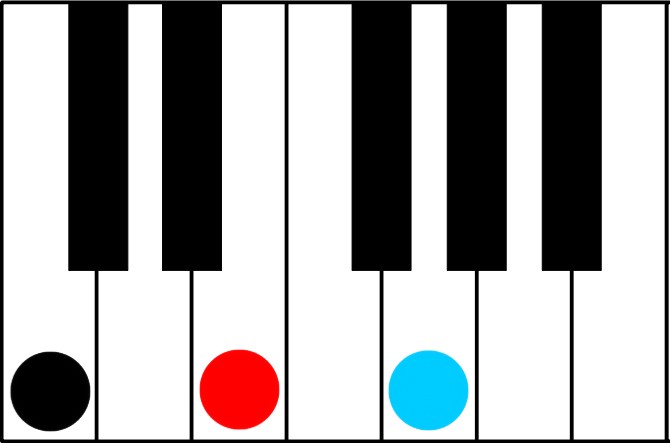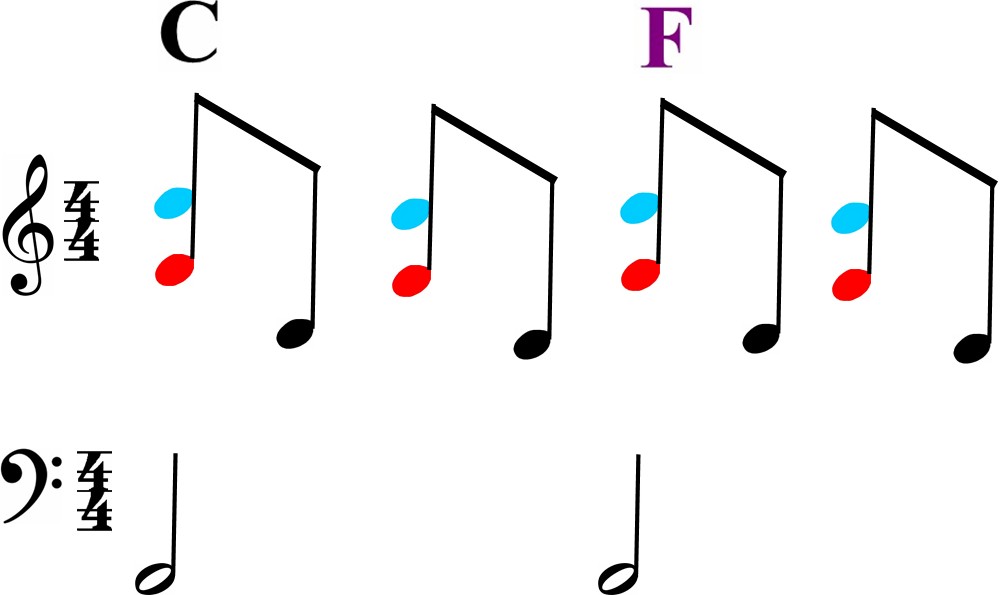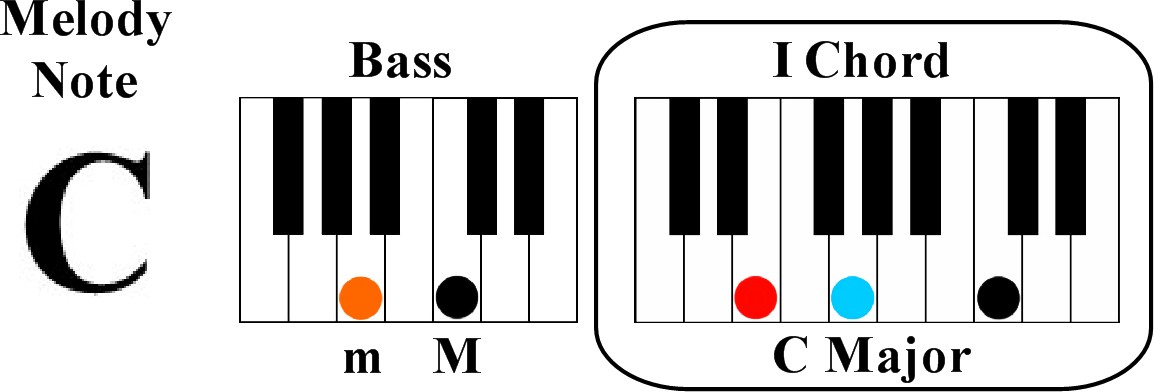It’s very easy for a beginning musician to think about every musical concept in terms of notes. This is especially true for an aspiring piano player. I believe this to be the case simply because of my education as a traditional piano student. It’s the nature of piano instruction because it’s so deeply rooted in written music. But have you ever wondered why?
The most obvious reason is the history of technology. The piano was invented by the harpsichord maker Bartolomeo Cristofori around 1700. The only way to convey a piece of music for many years was for it to be written. There was no recording or audio technology at the time. So written music essentially meant reading notes and playing them as written just as it does today.
recording or audio technology at the time. So written music essentially meant reading notes and playing them as written just as it does today.
It’s wasn’t until I began to break free of “reading” that I started to think of every musical concept in terms of chords. Even though I don’t particularly use standard music notation most of the time, I still use lead sheets and I’ll even read between the lines of standard music notation instead of playing it note for note.
But what I have found to be an enlightening way to understand and play music lies within the magic of triads in music theory. What are triads? I thought we were talking about chords. Well, tri means three. So what we’re really talking about here are three note chords. Triads in music theory aren’t difficult to understand. We’re actually talking about Major triads in this article. These are also known as Major Chords. But for now, we’ll stick with the term triads.

C Major Triad
I like to think of triads in music theory as being magical. And the reason why is because it’s makes music far easier to understand than without them. Did I also mention that it makes music way more fun? I may be more enthusiastic than most musicians about triads because I was one of the many millions of kids throughout history that had to endure taking traditional piano lessons that were all about reading music. I thought chords were only for guitar players.
When I discovered the magic of triads in music theory it set me free. I understand the concept of notes and like I mentioned earlier, I use lead sheets and even standard sheet music to play and learn songs on the piano. I just look at music from a different perspective that makes it easier and more fun. Let’s take a look at a few notes on the music staff and find out what makes them real music.

The example above appears to be notes. I should say that they actually are notes. They’ll certainly appear that way to most note reading musicians and that’s perfectly fine. But understanding the magic of triads in music will open up new and exciting possibilities for you.
You could certainly play the four bars of music as written and have a single note melody. It’s technically music but not very musical if you’re over the age of five. A simple analysis of the notes suggests that it could be in more than just one key. After all, it’s just a musical snapshot and not an entire song. But we could interpret these twelve notes as the key of C Major.
Now that we have a handle on a key center, how can the magic of triads in music theory help us? At the most basic level, each one of these notes can be harmonized by a Major triad.

Although it sounds very basic, we’ve come quite a step from a single note melody. This is actually the most fundamental concept of the magic of triads in music theory. Having the knowledge of triads as a chord rather than viewing them as individual notes is a very streamlined concept. Think about it. If you have five chords with three notes each, you have 15 notes to memorize or assemble. But grouping them as chords make the process of harmonizing a melody a whole lot easier.
The magic of triads in music theory will also take you further if you want to flesh out a melody rather than just play it as a single note melody line. Inversions are tools that allow you to harmonize melodies with having to play simple root position chords in your left hand.

This gives you the opportunity to play bass notes or rhythms in your left hand because it’s free and open without being stuck harmonizing the melody.

Now you can see the magic of triads in music theory coming together to create real music. But there is an issue up to this point. All of the triads that we’ve played up to this point are all major triads. There’s nothing wrong with major triads, but music has major and minor triads. Although I’m really focusing on Major triads with this article, I want to show you how you can use the same major triads to get minor triads without altering a single note in your right hand.
It’s a very simple concept. You can harmonize the melody in the same manner as in the earlier example but just by changing the bass note in your left hand, it becomes a minor triad. To execute this movement, just move the bass note down three half steps which are the distance of a minor third.

Melody Harmonization Guide Sample in C Major
This creates not only a minor chord but a minor 7 chord. The 7th is a color tone that is added to major and minor triads to create color within the chord. If you do not change any note in your right hand, it’s automatically there for you without any extra brain power!
Now you have two different types of chords that you can not only harmonize a melody but play a rhythm with both of your hands instead. There are times when you are playing a piece of music that is very rhythmically driven. You can sing the melody or another instrumentalist can play the melody. All of these possibilities are at your disposal just by understanding the magic of triads in music theory.
Click here to get your free melody harmonization guide and get started playing melodies at your piano or keyboard so you can sound like a professional. Whether it’s pop songs or hymns, this melody harmonization guide will teach you how to harmonize any melody and sound as though you’ve been playing for years instead of weeks. Also, find out more about Color Score for a complete system on how to learn to play the piano like a professional.
Until next time, Go Play!
Greg Lee
Latest posts by Greg Lee (see all)
- What is a minor/Major 7 Chord? - October 26, 2023
- 7 Chord Substitutions that Professionals Use - October 19, 2023
- 5 Simple Chord Tricks to Sound Amazing - October 5, 2023





